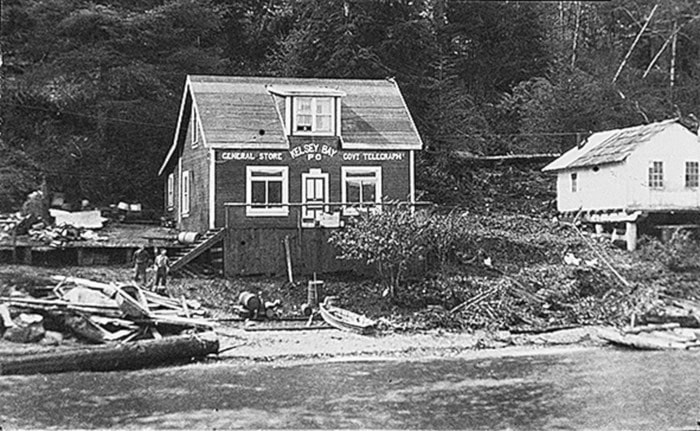Thelma Silkens
Museum at Campbell River
Little more than a hundred years ago, a system of dots and dashes transmitted over wire was the fastest form of communication in the world. The tap-tap-tap of the telegraph carried news, schedules and personal messages almost instantaneously from one operator to another.
Telegraph service came to Campbell River in 1909 and was extended to northern Vancouver Island a few years later. For the remote settlements at Kelsey Bay/Sayward and Port Hardy, the telegraph was a connection to the outside world and a lifeline in medical emergencies.
The wire was strung from tree to tree along the rocky shoreline or on poles through rugged inland terrain. It demanded constant servicing. Storms and snowfalls brought fallen trees and branches, encroaching brush had to be cleared, breaks in the line needed repair.
Linemen were employed to maintain the precarious telegraph service. Some worked along the coastline from “line boats” with two-man crews; others covered the inland trails on foot, staying in small cabins along the route. Telegraph Cove received its name when a lineman’s cabin was built there. Other cabins were at Windy Point and Southeast Bay.
One lineman was Percy Moore. Moore was from the prairies. He had once worked for Canadian National Telegraph as a groundsman pulling out mile-long coils of copper wire by hand. This experience helped when he applied for a temporary opening with the Government Telegraph Service in Campbell River.
“He [Jake Burgess, Superintendent of Telegraphs] asked if I was a boatman,” Moore wrote in his memoir A Country Boy, “No, I told him, although I liked the water.” Moore was assigned to help on a line boat based in Kelsey Bay. His job became permanent and he later was put in charge of a boat.
A trapper and lineman, Ed McLean was going to bed in the Southeast Bay cabin when a starving cougar crashed through the window and attacked him. McLean managed to slash at the animal with a knife and escape, shutting it inside the cabin.
The badly injured McLean was barefoot and clad only in his heavy woollen underwear on the cold winter night. He got to his rowboat and travelled six miles to the next cabin, where he lay in a sleeping bag until morning, when his call soon brought help.
The telegraph service between Campbell River and the north Island ended in the late 1950s, replaced by the growing use of telephones. Fred Lewis, who lived at Kelsey Bay, helped take down the telegraph wire. “Marvin Ladret had a contract to remove the line,” he said. “We cut the poles down first, they were rotten, some were already down.” They travelled by skiff and hiked in to the line, staying in one of the abandoned cabins. The copper wire they removed was looped in coils of 60 – 80 lbs. which they took to Kelsey Bay in their skiff, unloading them on the beach. “Marvin took the back seat out of his car and transported them to Vancouver to sell.”
A once vital thread of communication had fulfilled its purpose.
